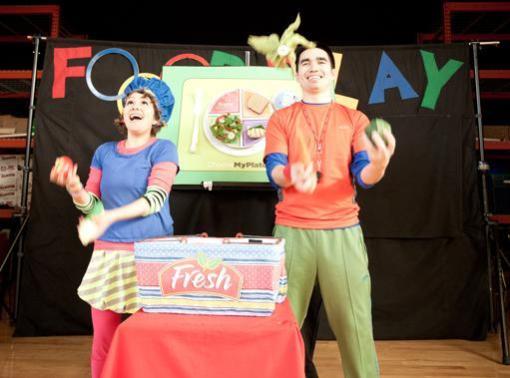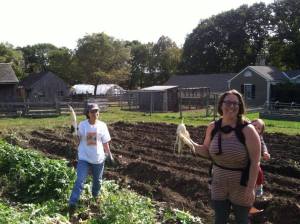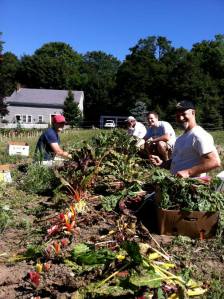I’m not an economist, just a English Major turned farmers market manager, so forgive me for my amateurism when talking about numbers.
Shopping at big box stores and national chains in the world today seems inescapable, especially when faced with their cheap prices for goods and billions of dollars of advertising cajoling you into your car at every turn, it’s good for your wallet right? Maybe not so much. There are strong economic reasons to spend your money not in a one-stop fashion, but in a slower, walkable environment, where streets, not aisles provide the pathways to building a strong capitalist society. A slow economy is about concentrating dollars in an area in which you live instead of extracting it. By now everyone who is insane about shopping local as I am should be aware of the much referenced statistic of %168, that is, that of every dollar spent locally, 68 cents is multiplied amongst the economy, instead of 43 cents of the dollar spent at a national chain, stretching the spending power of that dollar.
Though I could expound on shopping local’s statistical benefits and I will, it’s important to remember that dollars are our societal representations of value and that we spend them on things we value, so that by tracking dollars spent, we can create a picture of what a society values.
The culture of shopping at chain stores and spending our money outside of our communities is of the same mismanaged culture that has been building the suburbs for the past sixty years, a culture built on debt and foreign oil and is therefore unsustainable, as we saw recently in the subprime mortgage crisis, and incredibly harmful to our communities, as we see not only in the gutting of our cities (Detroit) but in the impersonality of many of our subdivisions. This is not the way it has to be. I believe that there is such a thing as a responsible, sustainable, and dare I say, even lovely form of consumerism.
I run a medium sized (nationally speaking) farmers market in a neighborhood of Boston that is a great example of how such a market can grow in parallel with a community and engage it in a mutual support system of economic revitalization.
The Roslindale Farmers Market was started almost thirty years ago in a commuter rail parking lot. It had no budget and one farmer that had to be heavily recruited by then City Councilor now Mayor Menino to attend. That farmer drove to the Roslindale in a station wagon piled high with produce strapped to the roof. That original farmer is still there, now with a box truck, five tents, and four staff. The market as a whole has grown to over thirty vendors. We are now running a substantial profit as a market and employ myself as well as two seasonal employees to run it.

Photo by Rene Dakota
Currently the farmers market draws an average of 2,500 people a day, mostly recent residents made up of young families and empty nesters, but also a sizable contingent of elderly people who represent the old guard of the neighborhood. The majority of shoppers live within a one mile radius and walk or bike to the market. In recent surveys we’ve conducted, the average amount spent at the market is $20 a person, so for a total of the 26 weeks that the market runs, that’s a total estimate of $1.3 million spent at the market a year instead of at the supermarket. 85% of those shoppers then go on to shop at the local brick and mortars in the rest of the business district spending many more thousands on any given Saturday. This is a growing economy.
What does this mean for our local vendors and businesses? Many of our farmers and specialty food vendors generate their whole income by selling retail at farmers markets, where they can get much more per unit than they would if selling wholesale. Many of them, due to their success at our market and others in the area, are now moving into their own brick and mortars after spending years in shared kitchens, or expanding in other ways. This is the farmers market as a slow economy incubator, providing a storefront for those without. Probably over 60 people are working at the market every Saturday and still, almost every week, I’m bombarded by vendors looking for extra help. This is job creation.
The neighborhood itself has been changing as well, from a place ten years ago where business owners pulled down metal grates across their storefronts at night, to one of rising property values and an influx of new and exciting businesses catering to all demographics. While I won’t credit these changes to the success of the farmers market as such neighborhood growth is a seriously complex ecosystem, the market, centered in historic town green, is symbolic of this wider revitalization, and a very public example how the residents of this neighborhood and city are changing the way they shop. This is how you build a real estate market while defying gentrification.
It’s clear the communities across the state and country have begun to embrace these tenets of shopping small in a big way. Massachusetts has a total of 254 farmers markets, up 55% from only five years ago. Nationally, since the turn of the millennium, farmers markets have grown from 2,863 to 8,144, a 284% growth. That’s enormous! It strikes me that the economic arguments against shopping at farmers markets, while certainly valid in some respects, especially for low income shoppers (though that demographic is shopping at markets in increasing numbers also), hold less water once you really delve into them, otherwise, how could all these thousands of expensive shopping locales be popping up in the midst of a recession? The benefits of shopping local are long term and are an investment in our collective future.
Every day I’m at the market I’m astounded at how happy people are to be there, interacting with their neighbors and friends, tasting the diversity of local food products our state produces, and strengthening their connection to this place and to each other. This is the secret to what will be the success of the Slow Movement and what faceless malls and parking lots lack. Slow Food has to be based on our human connections first, everything else comes later. This is why I’m using the dollar (perhaps lamely) as a stand in for what we humans value. Money spent at a chain, representative of a consumer culture based upon mountains of debt and vacuity, is cheap money, both in terms of its spending power (remember that %168 rule) but also in terms of what it actually buys us, which is just items, not an actual connection with your neighbors, your block, your neighborhood, your city, and it’s not a smart pathway towards providing a strong foundation for the future of our communities.















